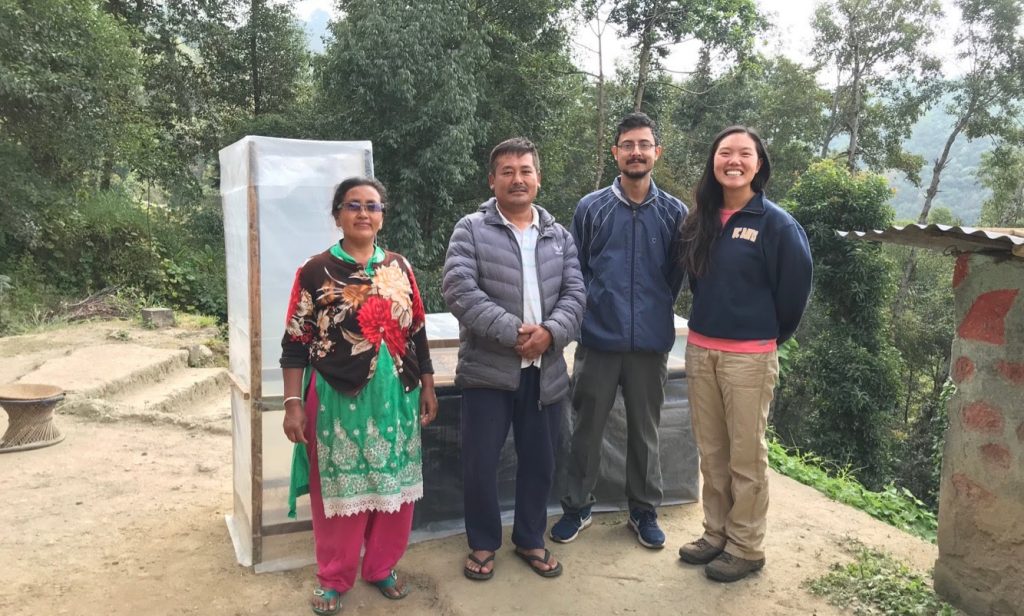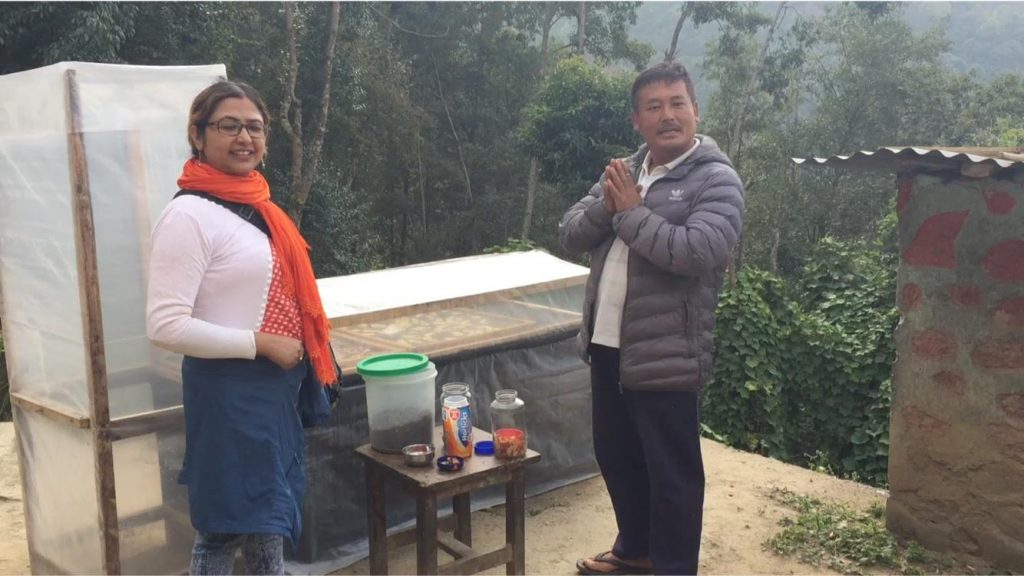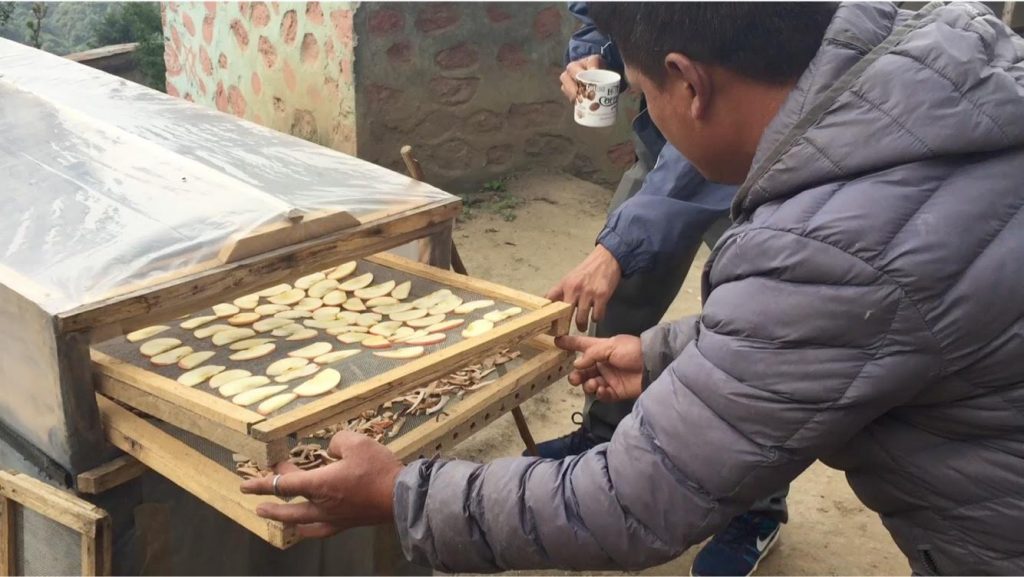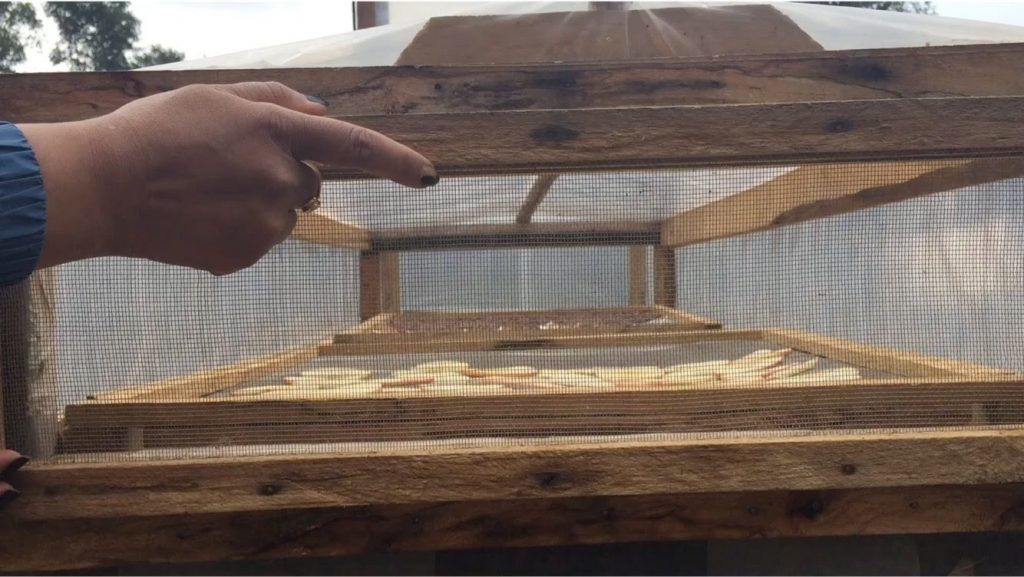Meet Dawa and Laxmi Sherpa, Innovative Farmers and Chimney Solar Dryer Early Adopters

Pictured from right to left: Lauren Howe, Subash Karki of CGED Nepal, Mr. Dawa Sherpa (farmer and husband), and Mrs. Laxmi Sherpa (Dawa’s wife)
Nearly six months ago, an NGO called Centre for Green Economy Development Nepal (CGED Nepal) found the Horticulture Innovation Lab chimney solar dryer manual online from a Google search of alternative technologies for solar drying. “The chimney dryer seemed affordable, simple, and easy to construct,” they shared with me as we siped dudh-chiya (milk tea) in their office. CGED Nepal reached out to the Horticulture Innovation Lab over the summer to share their experiences building and using the dryer, which they hope to offer to farmers as part of their suite of alternative energy technologies for sustainable development, agricultural livelihoods, and income generation.

As luck and life would have it, I’m now in Nepal conducting my International Agricultural Development (IAD) MS thesis research, which involves piloting the chimney solar dryer as part of the USAID-funded Suaahara II project, with the assistance and support of NGO Helen Keller International and one of their partner NGOs, Vijaya Development Resource Centre (VDRC). Within my first two weeks in Nepal, I had the great opportunity to visit CGED Nepal’s field site in Shivapuri Nagarjun National Park (just a couple hours north of Kathmandu) to see how they’ve adapted our technology locally. CGED constructed a demonstration chimney solar dryer in July 2018, and I met Mr. Dawa and Mrs. Laxmi Sherpa, innovative farmers and early adopters who were the first in the community to build their own. The couple originally wanted to sell their fresh vegetables in supermarkets in Kathmandu but were turned away because they could not provide a continuous year-round supply. Highly motivated and always open to try new things, Dawa was convinced by his wife Laxmi who attended the initial chimney dryer demonstration training and urged him to see the prototype and make one for themselves. He was convinced to build a chimney dryer because of the low cost, low risk and high potential, and now the chimney dryer might help them sell their surplus produce in a dried form. Moreover, before the chimney dryer, they weren’t really drying, but now Dawa is enthusiastic and plans to train a group of women farmers in his village, eager to show the results of how quickly and easily it works.

Dawa and Laxmi are currently using the chimney dryer to dry apples, pears, a variety of Sichuan peppercorns (the kind in Chinese food that make your mouth go numb and tingle, known as “timur” in Nepali), and mushrooms. In the last three months, they’ve seen exciting results, as mushrooms used to take 3-4 days to dry using the traditional method of open-air sun drying, but now only require 24 hours inside the chimney dryer. They also like the chimney dryer because even if it’s raining, they can use it because of the plastic covering, which is impossible with open-air drying that leaves product exposed to the elements like rain, pests, and dust. After seeing the demo chimney dryer that CGED built in his village, Dawa made a number of modifications on their own version, including adding screens to the back and front of the tunnel to protect the product from insects, fixing the plastic permanently to the sides of the table with sliding trays, and making the dryer smaller (a shorter table and shorter chimney, though a shorter chimney is NOT recommended for optimal airflow, which I pointed out during the field visit).

Perhaps most importantly, Dawa, Laxmi, and CGED found the chimney dryer to be an affordable and appropriate technology. Building the dryer didn’t cost the couple much more than 5,000 Nepalese rupees ($40-45 USD) because they had many of the construction materials like wood, steel mesh, and nails readily available. “It could even be a free technology if farmers already have the clear plastic on hand,” Dawa noted, though CGED is excited that the chimney dryer may also improve job opportunities for carpenters by giving them an additional project skill. The CGED Nepal team is also confident that the chimney dryer is easy to construct and every household could have one, though of course, farmers need to see a return on their investment of time and money. As I prepare to carry out the rest of my research here, I am so grateful to CGED Nepal for connecting and taking me out on this adventure, as now I can share this experience as an early success story with my Nepali colleagues from Helen Keller International (HKI) and Vijaya Development Resource Center (VDRC).
——
This article was originally published on November 13, 2018, at Blum Center, UC Davis, and is republished with the permission of the author Ms. Lauren Howe. The link to the original article is here. The viewpoint in this blog is solely of the author. Lauren Howe is a second-year MS student in International Agricultural Development (IAD), specializing in International and Community Nutrition. She is a Graduate Student Researcher at the Horticulture Innovation Lab, whose global research network advances fruit and vegetable innovations, empowering smallholder farmers to earn more income while better nourishing their communities.
CGED-Nepal wants to thank Ms. Howe for agreeing to let us re-upload her blog and for the continuous support she and her team in Horticulture Innovation Lab, have provided. We wish her all the best in her future endeavors along with this project. This Solar dryer project was developed using the locally available materials, for the use of members of the Bufferzone user-group Committee of Shivapuri-Nagarjun National Park, was initiated by the Watershed Management (NGO Package 1), run under ADB/BRBIP (Asain Development Bank/ Bagmati River Basin Improvement Project), IDSN/CGEDN JV (Integrated Development Society Nepal/Centre for Green Economy Development Nepal, Joint Venture), as a way to demonstrate different alternative sources of green energy.
